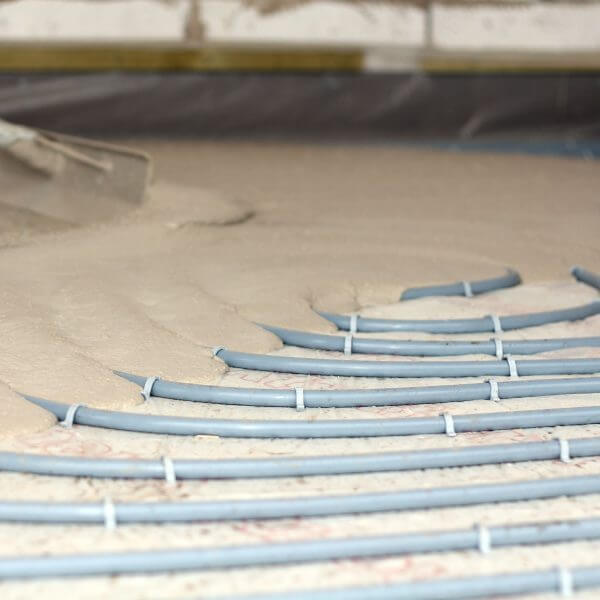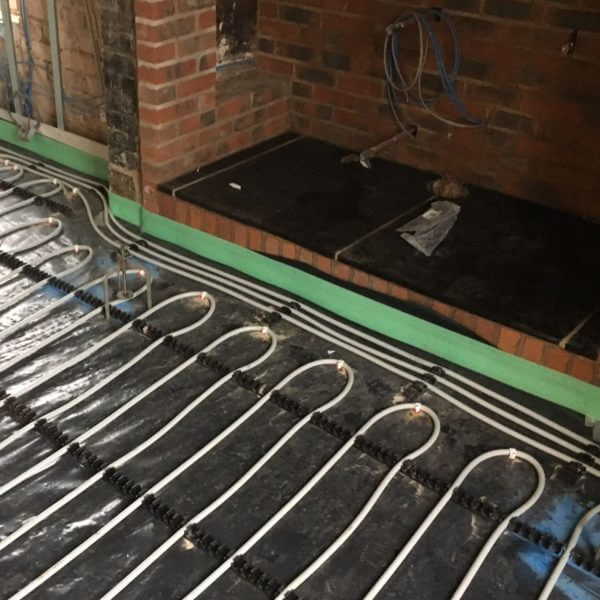Running Hydronic Underfloor Heating on Renewable Energy
Using renewable sources of energy to power our homes is becoming increasingly more possible with each passing year. But many properties are still reliant on combustion boilers. Understandable, considering the price of gas and the widespread support for this type of heat source.
With the advent of underfloor heating, it’s never been easier to get energy efficient heating run on renewables. Read on, and see how a water underfloor heating system can run on renewable energy.
Running Underfloor Heating on Renewables
For electric underfloor heating, it’s as easy as connecting your own renewable energy to your mains. But what about a water-based underfloor heating system?
This type of underfloor heating needs a compatible heat source to bring the water to the optimal flow temperature. Fortunately, this isn’t limited to combustion boilers. There are many heat sources that don’t require the use of gas, oil, or biomass to function.
Heat Pumps
These run off mains electricity to provide heating and cooling to a building. While this heat source has a high cost of installation, it can run up to three times more efficiently than a combustion boiler. This is one of the most popular choices our underfloor heating installers pair heating systems with.
The different types of heat pumps have their specific advantages that could meet your needs. Furthermore, heat pumps benefit from government and local grants that can offset the installation cost significantly.
Electric Boilers
These are essentially the same as combustion, except they use mains electricity to heat the water. These boilers are cheaper than combustion to install, however they are not the most energy efficient heating method, and will use more electricity than a heat pump. That said, their increased running costs can be offset if you are committed to generating your own electricity.
Solar Thermal Stores
This heat source uses solar energy to store hot water for use in providing radiant heating. Due to the lower flow temperature requirement compared to radiators, underfloor heating is the most energy efficient heating to pair with this particular heat source.
That said, the heat output is wholly reliant on solar energy, which will dwindle down during the winter and night when you need heating most. It’s often best used in conjunction with another heat source, like heat pumps.
Generating Renewable Energy For Underfloor Heating
While you can pick an energy supplier that claims to supply 100% renewable energy, as you are tied to the national grid, your home will be powered by a mix of renewable and fossil-fuel energy in reality. For a higher ratio of renewable energy powering your water underfloor heating system, generating your own is essential.
Solar Energy for Heating
The most common renewable energy generation for a standard home property are solar panels on the roof, as they don’t require planning permission. An average installation should generate up to 6kWh of electricity, depending on the amount of panels and how much sunlight reaches the panels.
Solar generated power benefits from clean energy grants, but providing heating can get tricky in the winter months. Shorter sunlight hours and overcast days will significantly impact your ability to generate electricity for heating when you require it most.
Wind Energy for Heating
The second most common renewable energy source you can harvest at home is wind. Miniature wind turbines can generate up to 24 kWh per day, depending on the size of the turbine and the strength of the wind in your area.
The UK is never short of windy days, making this a more reliable energy source for your heating in winter. Energy.gov estimates it can cover between 50-90% of a typical home’s electricity usage.
Harnessing wind on your property is at the mercy of planning permission and local zoning laws. These can limit the size and amount of turbines you can fit on your property. Generally, your average home will be allowed to fit a single miniature wind turbine.
Hydroelectric Energy for Heating
If water flows through or near your property, water-wheels or hydroelectric turbines are a potential option. It requires planning permission and is one of the most pricey renewable technologies at present, but is reliable all year round to offset the demands of your heating system.
How our Underfloor Heating Installers Can Help
EasyFlow’s experienced underfloor heating installers are highly qualified to link a wet underfloor heating system to a heat source that can run off renewable energy. We support the installation of air source heat pumps, which is the most common type installed across properties.
To find out more about our heating systems, contact us for a free no obligation quote.




Where To Find Us